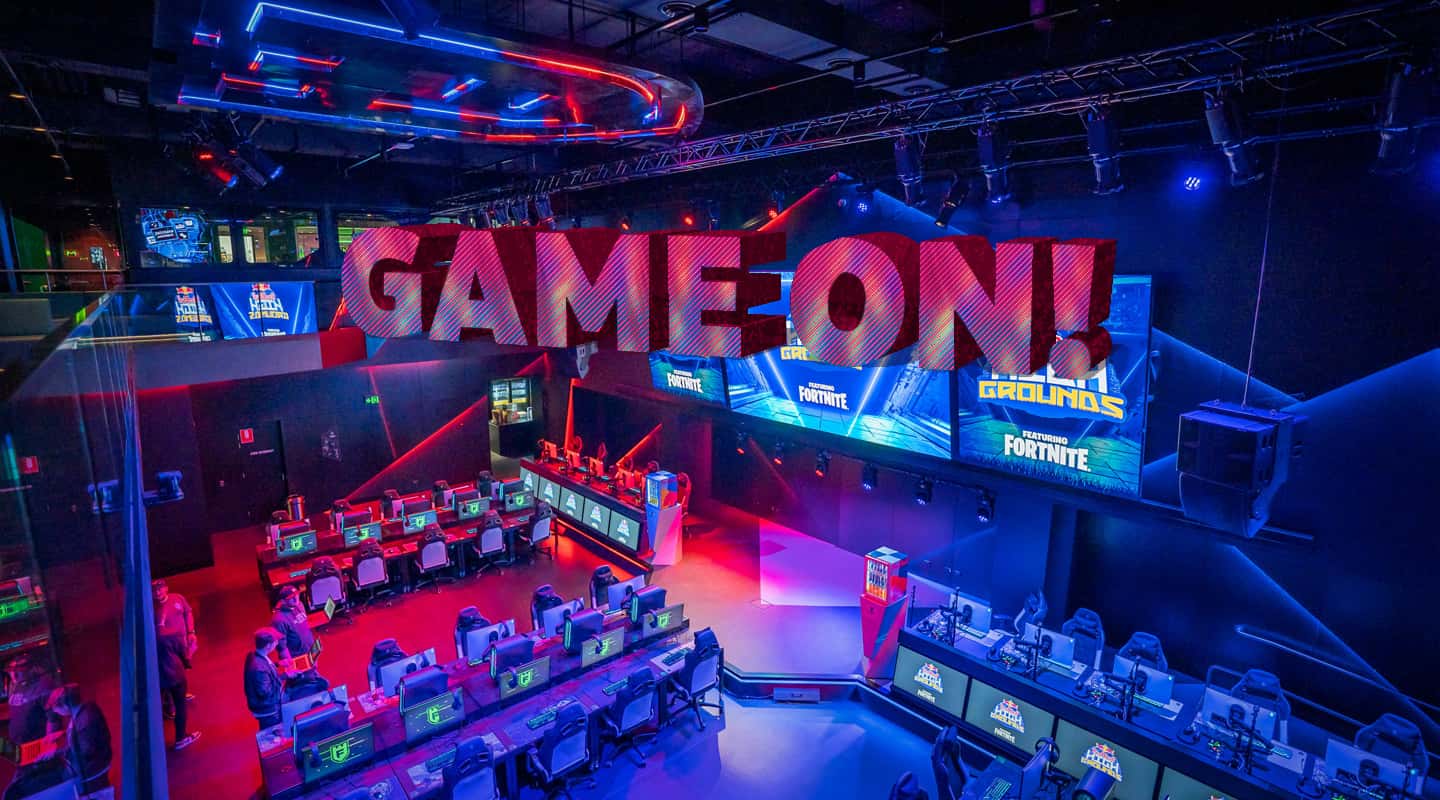
Fortress Games: Game On!
Fortress Games, Sydney: an esports venue where the key disciplines of AV collide. Let the fun begin.
Text:/ Christopher Holder
Fortress Games Sydney is as ambitious as a Call of Duty suicide mission and as epic as an Assassin’s Creed weekend with unlimited beer and pizza. From an AV perspective it’s a large hadron collider loaded with broadcast, live production, hospitality, networked audio and control.
Where other esports venues have been less than convincing is when one or more of the key AV disciplines are underwhelming. When everything meshes, then the results can be spectacular.
Sydney-based integration firm, The AVIT Group, was introduced to Fortress when its Technical Director Adrian Davis bussed down to the Melbourne outlet to assist in a special weekend of competition. He left a positive impression and AVIT was invited to bid on the AV aspects of the upcoming build of Fortress Sydney.
The more Adrian and The AVIT Group’s CEO Brad Magri heard about Fortress, the more they were convinced it was right in their sweetspot — a multi-disciplinary AV pile-on that would require as much creative thinking as it would clear thinking.
“From inception it was very clear that these these guys were doing esports but with a broadcast mentality,” reckons Adrian Davis. “It’s something I wish more webcasters or streamers would take seriously. We have 60-plus years of broadcast history and experience, which is often completely forgotten in a new world of streaming — to our detriment.
“Fortress, on the other hand, wants to marry the two worlds, in a big-league way.
“From a broadcast perspective, Fortress is a Ross Video house, which is a wonderful top-tier broadcast manufacturer. But the difference with Fortress is it’s not a traditional broadcast studio because, of course, it’s also an AV site and an events venue. So the combined system sits under a layer of, in this case, Q-SYS control. In fact, we’ve had a lot of fun with Q-SYS — it was almost a case of brainstorming ‘what else can we get Q-SYS to do?!’ But it’s designed with the end users in mind to make sure that we refine it for their operation — it’s not a programmer-led solution; it’s a user-led programming solution.”


FUN WITH Q-SYS
One of those ‘fun’ things is to have Q-SYS managing and playing beer hall ambience through the Quest Audio MX601 loudspeakers and low-profile 10-inch subs (with lab.gruppen D series amps providing the power) in the venue’s medieval-themed tavern. Adrian Davis explains: “The acoustics of the tavern is wonderfully dead, but without the beer hall ambience it can be intimidatingly sterile from an audio perspective. No one notices the ambience until it’s switched off — and that’s the point… from a psychoacoustics point of view, we want to keep it below the perception level.
“The tavern has bookable console booths — you can choose from any of the three main video games platforms. The front of house staff access Q-SYS from an iPad where they can set a timer and onboard the guests. Once the guests depart, the booth’s display returns to in-house signage via the Yodeck digital signage platform.
“Every single screen is powered by a Birddog Play media player, so you can get some NDI content in there — those units get better with every firmware release.”
MC’ing events in the tavern (or anywhere else in the venue) is child’s play thanks to AVIT’s spec of an RF Venue amplified antenna setup for its wireless mics: “You can take one handheld and walk throughout the entire venue and get uninterrupted coverage, which is really, really cool. Of course, if you spark up the handheld in the tavern, you don’t want it coming through the arena’s PA or vice versa, and that isolation is done through the Q-SYS programming.”
“”
it was very clear that these these guys were doing esports but with a broadcast mentality
HYPED ARENA
The players are the heroes, and all eyes are on the 10 player pods during competition. Each gets a Marshall CV506 miniature camera to capture player reactions. The broadcast features of the Marshall cams combined with the Showtech-supplied lighting fixtures and superior lighting design of Darcy Cook, ensures the player footage is lifelike and engaging. Adrian Davis: “The players aren’t aware of the Marshall cameras and they don’t impact their performance. But you capture the emotion, which is a huge part of the broadcast.

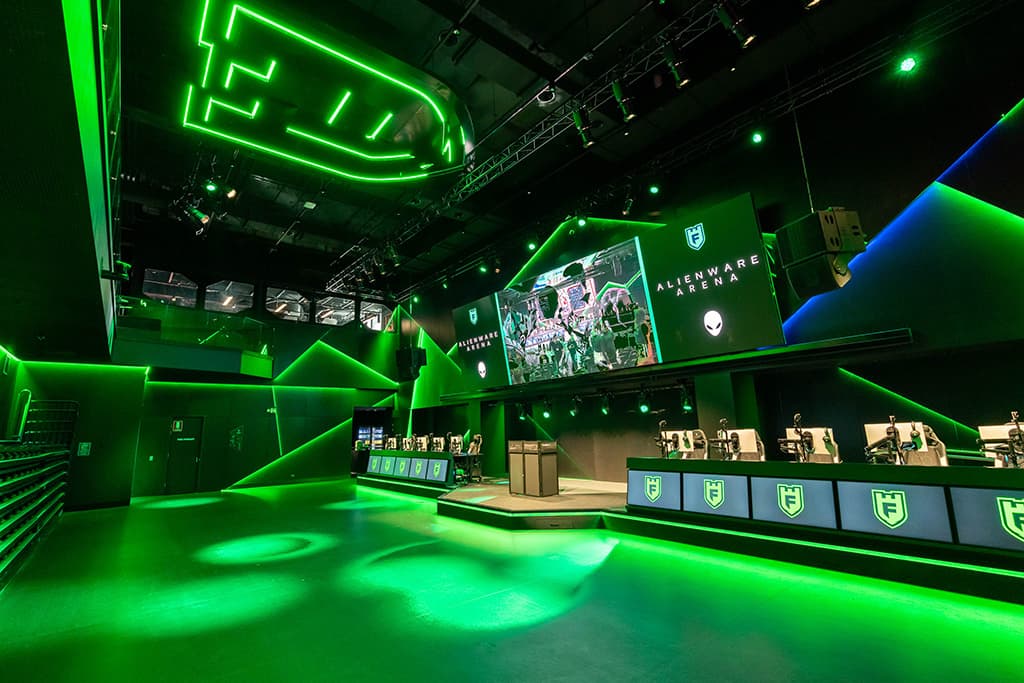
“We colour balanced the Marshall cameras. We used a video coloured chart, and we threw it into a fabric scope to get the colours perfect. This is really important because we’re talking about people’s skin tone and we want to make sure that everyone’s represented correctly when they’re on the big screen or on the stream. We can even colour balance the cameras remotely via RS485 control.”

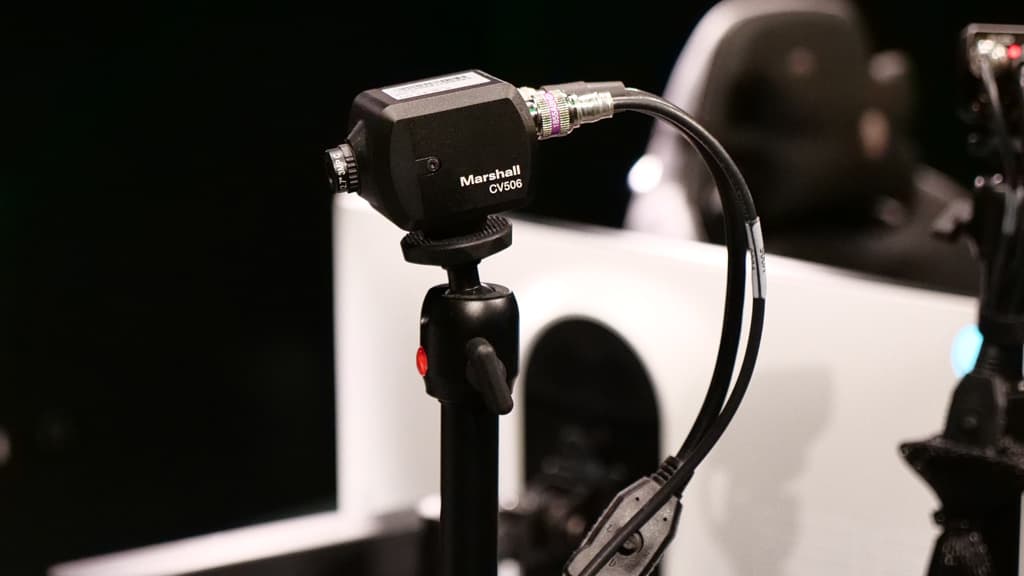
Each player pod runs a high-end Alienware desktop PC and features a hefty 48-inch screen that, again, is another signage display when not involved in game play.
A Nexo loudspeaker system (based on a P15 a side with a companion 18-inch flown sub) powered by a Nexo NXAMP4x2 amp, keeps the crowd hyped, fed by audio mixed from an Allen & Heath SQ7 digital mixer. Digital audio runs on an AES67 network (“for licensing and compatibility purposes”).
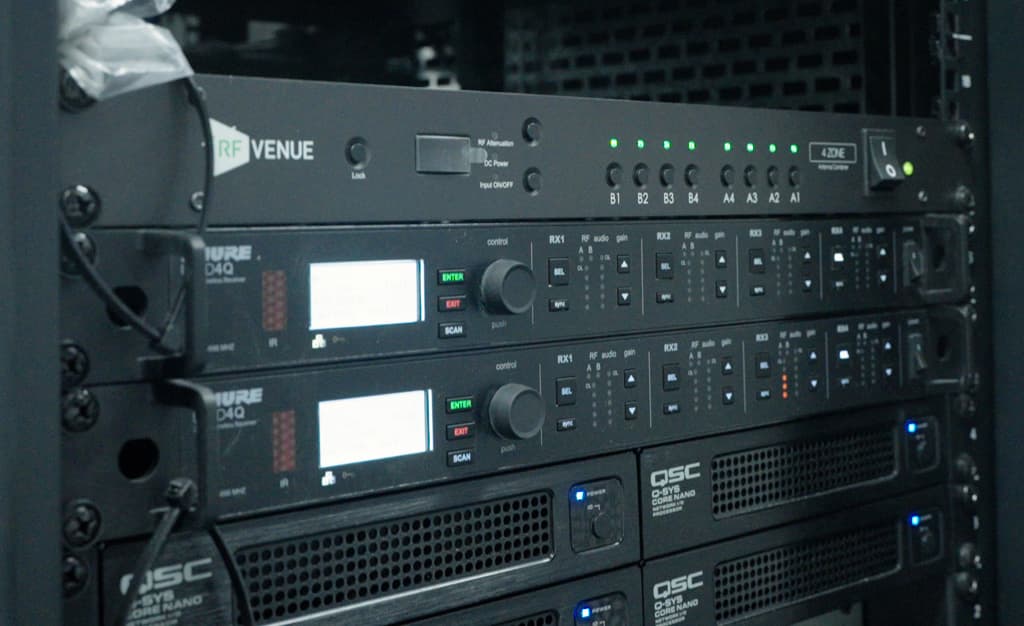

Dell is a major sponsor of Fortress and the machine room is chock full of its switches. Video transport remains resolutely SDI. The facility is run on over four VLANs. The RF Venue hardware and Shure wireless AVIT’s lead wireman Matthew Venuto has outdone himself — the wiring and looms are a thing of beauty.
CONTROL ROOM
The control room makes for a familiar work zone for veteran sports broadcasters, only, in this case, the producer has three additional ‘virtual cameras’ at their disposal as well as the standard video hardware in the Arena. In the back gallery of the control room, three ‘observer’ machines provide an alternative perspective of the gameplay by non-participant crew following the action. Often they’ll follow the front runners/top scorers but can also provide a bird’s eye view. The Ross Video Ultrix FR5 platform manages all the routing, along with the audio embedding and de-embedding.
“Ross Video worked on the broadcast spec with Fortress before we were confirmed as the integrator,” explains AVIT’s Adrian Davis. “It’s a great spec, but one tweak we made was to put MADI in and out of the Ultrix. That allows us to embed and de-embed audio from any of the sources — including the observer machines — and make that audio available on the audio mixing console. This has proven to be incredibly powerful. It’s a similar story for the players’ PCs and the player cameras — having that audio de-embedded and available for the Arena mix and/or the stream mix is amazing. The audio operator may not even push the correct fader up to capture a particularly compelling audio moment but that audio is still available from vMix and can be added and mixed later.
“A great stream mix is all about capturing the humanity and the emotion of the gameplay and this feature has really helped to provide something truly immersive.”
The front gallery of the control room accommodates the producer and director, the replay position running vMix software, and the graphics ops. Two 2×2 videowall provides an at-a-glance tiled view of all the iso feeds. A Ross Video Carbonite Black+ takes care of the vision mixing.
Rounding out the impressive Ross Video spec is the XPression graphics engine. XPression handles the real-time stats, the player profile, leader boards and more. These graphic elements aren’t pre-rendered but dynamically responds to data it pulls from the event and other online sources. As a glacé cherry on the video cake, the XPression Tessera One takes care of video for the Samsung 32×9 LED wall.
“”
we’ve had a lot of fun with Q-SYS — it was almost a case of brainstorming ‘what else can we get Q-SYS to do?!’

BUILDING & FLYING
AVIT Projects Director Bill Zossimas describes it as ‘building the aeroplane as you fly it’, others euphemistically call it a ‘compressed timeframe’… regardless, it resulted in Adrian Davis having only 20 hours onsite to commission the AV systems ready for a press launch of the venue. To its credit, AVIT not only got the plane in the air, it’s been subsequently fine-tuning and perfecting the systems to a point where the Fortress staff (and patrons) can’t wipe the smiles off their faces.
CORE PROMISE
Q-SYS plays a significant role in wrangling audio and as a control system. A Q-SYS Core 501i was on the original spec, but when AVIT saw the launch of the Core Nano product, it suspected there might be a better way of slicing and dicing the Q-SYS ‘pie’.
Adrian Davis: “First up, we realised we would only be using 22% of the Core 501’s processing, which got us thinking about the Core Nano, and splitting the duties.” Fortress, in fact, has four Core Nanos on site, each with a different role.
Core Nano 1: Handles venue-wide audio and control. Which accounts for about 20% of a Core Nano’s processing. Core Nano 2: is used specially for the broadcast audio routing and control “so as the technical director cuts different cameras to line, we have individual mixes from the different player cameras. Cutting to a camera triggers a TSL value out of the Ross Video Carbonite, which shoots it over to Q-SYS, which crossfades up a separate mix for just that camera, that comes up as a separate fader. That’s a really novel thing we’re doing. And we’ve also developed some stuff in that second Core where Q-SYS is driving text fields and cueing graphics in XPression.”
Core Nano 3&4: Are being used for ‘R&D’ — namely, allowing AVIT and the Fortress team to try things without messing with the core operation of the venue. “They can continually iterate, make changes and develop what they’re doing, all while leaving the audio processing and control unaffected. Overall, the Nano approach gives Fortress more flexibility and redundancy, even.”
CONTACTS
Fortress Games: fortress.games
The AVIT Group: theavitgroup.com.au
EQUIPMENT HIGHLIGHTS
- Ross Video broadcast systems
- Q-SYS control & audio DSP
- Marshall miniature broadcast cameras
- RF Venue wireless distribution
- Nexo & Quest Audio loudspeakers
- Lab.gruppen power amplifiers
- Allen & Heath mixing console




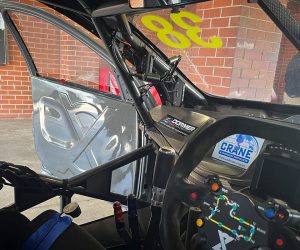






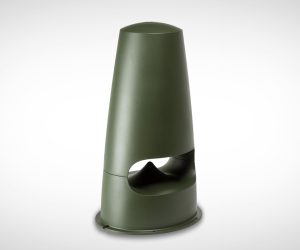
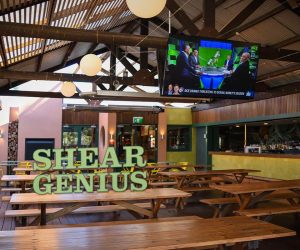


RESPONSES